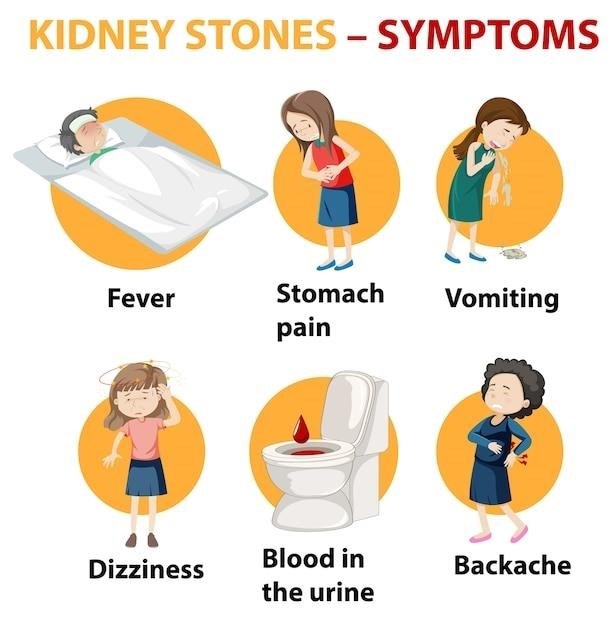Worn valve guides can cause a variety of symptoms‚ including increased oil consumption‚ blue smoke from the exhaust‚ loss of compression‚ rough idle‚ decreased engine performance‚ valve noise‚ and a check engine light․ You may also notice oil on the spark plugs or blue-gray smoke on startup․ These symptoms are often caused by oil leaking through the damaged valve guides into the combustion chamber․
Increased Oil Consumption
One of the most common signs of worn valve guides is increased oil consumption․ This occurs because the oil is leaking past the damaged valve guides and into the combustion chamber‚ where it is burned along with the fuel․ If you notice that your engine is using more oil than usual‚ especially if you see blue smoke coming from the exhaust‚ it’s a good idea to have the valve guides inspected․ The cost to replace car valve guides ranges from 400 to 1‚200‚ depending on DIY or professional replacement and additional repairs needed․ Worn valve guides cause symptoms like valve seals not staying seated and poor engine performance‚ often due to improper lubrication‚ high mileage‚ or poor maintenance․
Valve stem seals in some engines can fail because of a design flaw․ A broken valve stem seal will exhibit one or more symptoms․ Here are some of the most common symptoms of valve stem failure⁚ Bluish smoke can be an indication that the valve stem seal has become loose‚ broken‚ or severely damaged․ If you are looking for obvious bad valve guides symptoms‚ blue smoke coming from the tailpipe is a sure sign that the car engine has some issue․ Although the blue smoke is not a result of issues with the car valve‚ it is a common indication․
Excessive heat and wear can manifest in several ways⁚ Oil Consumption⁚ Increased oil use may indicate oil seeping past worn valve guide seals․ Smoke from Exhaust⁚ A common symptom where blue smoke indicates oil burning within the combustion chamber due to valve guide issues․
Blue Smoke from Exhaust
Blue smoke coming from the exhaust is another classic sign of worn valve guides․ This smoke is caused by oil burning in the combustion chamber․ When the valve guides are worn‚ oil can leak past them and into the cylinders․ This oil then mixes with the air and fuel and is burned‚ producing the blue smoke․ The smoke is usually more noticeable on startup or when the engine is accelerating․
Valve problems can stop your vehicle in its tracks and lead to expensive repairs․ Valve problems are a sign of serious issues with your car or trucks engine․ Properly sealed valves are crucial to your engines compression․ Oil consumption is the most frequent symptom when you have bad valve guides‚ bad valve seals‚ or bad valve stems․ The oil is leaking inside of the combustion chamber and it starts burning․ This will reduce your oil level and you will frequently have to fill up the oil․
If theres a failing seal‚ combustion may not occur as it should․ Thats why its important to know the symptoms of a bad valve seal before engine performance dramatically suffers․ This guide strives to reveal the top bad valve seal symptoms and discuss the purpose of these seals․

If you are looking for obvious bad valve guides symptoms‚ blue smoke coming from the tailpipe is a sure sign that the car engine has some issue․ Although the blue smoke is not a result of issues with the car valve‚ it is a common indication․
Loss of Compression
Loss of compression is another symptom of worn valve guides․ When the valve guides are worn‚ the valves don’t seal properly in the cylinder head․ This allows combustion gases to escape past the valves‚ reducing the pressure in the cylinder․ Loss of compression can lead to a number of problems‚ including reduced power‚ rough idling‚ and difficulty starting the engine․
Valve guide wear‚ refers to excessive clearance‚ between valve stem and valve guide․ As valve guides wear‚ the side to side movement‚ can cause valves to seat improperly․ Valve leakage‚ causing compression loss‚ is another reason for engine issues․ Bad valve seals or guides will leave blue-gray ish smoke on startup‚ or when the engine has idled and has had enough vacuum to pull oil through the seals or guides‚ once revved it smokes out the tailpipes but no more smoke while driving or under load where less vacuum is present․
They are subject to a lot of heat (especially exhaust valves)‚ and over time the guides will wear․ Will bad valve seals cause low compression? Yes․ Several problems from the valve can lead to low compression․
Loss of compression can be a symptom of a variety of problems‚ so it’s important to have your engine diagnosed by a qualified mechanic․
Rough Idle
A rough idle is another sign that your valve guides might be worn․ When the valve guides are worn‚ the valves don’t seal properly in the cylinder head․ This can cause the engine to misfire‚ which can lead to a rough idle․ A rough idle can also be caused by a variety of other problems‚ such as a dirty air filter‚ a faulty spark plug‚ or a clogged fuel injector․
The EGR in a diesel engine plays a significant role in your vehicles overall performance‚ but what is it exactly? Heres ․․․ [․․․]
If you notice a rough idle‚ it’s important to have your engine diagnosed by a qualified mechanic to determine the cause; If the problem is caused by worn valve guides‚ they will need to be replaced․
A rough idle can be a sign of a serious problem‚ so it’s important to get it checked out as soon as possible․
Decreased Engine Performance
Worn valve guides can lead to decreased engine performance in several ways․ When the valve guides wear‚ the valves don’t seal properly‚ leading to a loss of compression․ This loss of compression reduces the engine’s power output‚ resulting in sluggish acceleration and a noticeable decrease in overall performance․
The loss of compression can also lead to a decrease in fuel efficiency‚ as the engine has to work harder to produce the same amount of power․ In addition‚ the worn valve guides can allow oil to leak into the combustion chamber‚ which can lead to oil consumption and blue smoke from the exhaust․
If you notice decreased engine performance‚ it’s important to have your engine diagnosed by a qualified mechanic to determine the cause․ If the problem is caused by worn valve guides‚ they will need to be replaced․
Valve Noise
A common symptom of worn valve guides is a distinctive valve noise‚ often described as a tapping or clicking sound․ This noise is caused by the valves moving excessively within the worn guides‚ creating a rattling or knocking sound․ It’s often more pronounced at idle‚ when the engine is under less load‚ and can become louder as the engine warms up․
The noise can be heard from the engine compartment‚ or in some cases‚ it may even be audible inside the cabin․ The sound is typically intermittent and can vary in intensity depending on engine speed and load․ If you hear a valve noise‚ it’s essential to have your engine inspected promptly by a mechanic to determine the cause․
While valve noise can be a sign of worn valve guides‚ other engine components‚ such as worn lifters or rocker arms‚ can also contribute to these sounds․ A mechanic can use a stethoscope to pinpoint the source of the noise and determine the best course of action․
Check Engine Light
A check engine light can illuminate on your dashboard for a variety of reasons‚ and worn valve guides are one possible culprit․ While the check engine light itself doesn’t definitively indicate bad valve guides‚ it often signals a problem with the engine’s combustion process or emissions system‚ which can be related to valve guide wear․
When valve guides are worn‚ they can allow oil to leak into the combustion chamber‚ leading to increased oil consumption and potentially affecting the engine’s efficiency․ This leakage can trigger the check engine light due to an imbalance in the air-fuel mixture or emissions exceeding acceptable limits․
If your check engine light comes on‚ it’s advisable to connect your vehicle to an OBD-II code reader․ This device can provide specific error codes that can help pinpoint the issue․ If the code relates to misfires‚ lean conditions‚ or high emissions‚ it’s worth investigating the possibility of worn valve guides as a potential cause․
Oil on Spark Plugs
Finding oil on your spark plugs can be a sign of a number of engine problems‚ including worn valve guides․ When valve guides wear down‚ they create a gap between the valve stem and the guide‚ allowing oil to seep past the valve stem seals and into the combustion chamber․ This oil can then be deposited on the spark plugs‚ leaving behind a telltale oily residue․
The presence of oil on the spark plugs can hinder their ability to ignite the air-fuel mixture properly‚ leading to misfires and a decrease in engine performance․ The oil can also foul the spark plug electrodes‚ further impacting their ability to generate a spark․
If you notice oil on your spark plugs‚ it’s crucial to investigate the source of the leak․ While worn valve guides are a possible culprit‚ other issues like worn piston rings or a faulty PCV valve can also contribute to oil buildup on the spark plugs․ A mechanic can diagnose the specific cause and recommend appropriate repairs․
Blue-Gray Smoke on Startup
A telltale sign of worn valve guides is the appearance of blue-gray smoke coming from the exhaust‚ especially when you start the engine after it has been sitting for a while․ This distinctive smoke color is a result of oil leaking past the worn valve guide seals and into the combustion chamber․ When the engine is cold‚ the oil is thicker and more likely to leak past the seals‚ causing it to burn with the fuel and produce the blue-gray smoke․
As the engine warms up‚ the oil thins‚ reducing the amount of leakage and the intensity of the smoke․ This characteristic behavior‚ where the smoke is more pronounced on startup and dissipates as the engine warms‚ is a strong indicator of worn valve guides․ However‚ it’s important to note that other factors‚ such as worn piston rings‚ can also contribute to blue smoke․
If you notice blue-gray smoke on startup‚ it’s crucial to address the issue promptly․ Worn valve guides can lead to significant oil consumption‚ reduced engine performance‚ and even damage to the catalytic converter․ A mechanic can diagnose the cause of the smoke and recommend the appropriate repairs‚ which might involve replacing the valve guides or seals․
Smoke During Acceleration
While blue-gray smoke on startup is a classic symptom of worn valve guides‚ you might also observe smoke during acceleration‚ particularly if the engine has been idling for a prolonged period․ This phenomenon occurs because the increased vacuum created during acceleration pulls oil through the worn valve guide seals and into the combustion chamber․ The oil then burns with the fuel‚ resulting in smoke being emitted from the exhaust․
The amount of smoke during acceleration can vary depending on the severity of the valve guide wear and the engine’s operating conditions․ In some cases‚ the smoke might be barely noticeable‚ while in others‚ it can be quite thick and visible․ If you experience smoke during acceleration‚ it’s essential to have the issue diagnosed and addressed by a mechanic․
Ignoring this symptom can lead to increased oil consumption‚ reduced engine performance‚ and potential damage to the catalytic converter․ A mechanic can inspect the valve guides and recommend the appropriate repairs‚ which might involve replacing the valve guides or seals․

0 comments on “bad valve guides symptoms”Add yours →